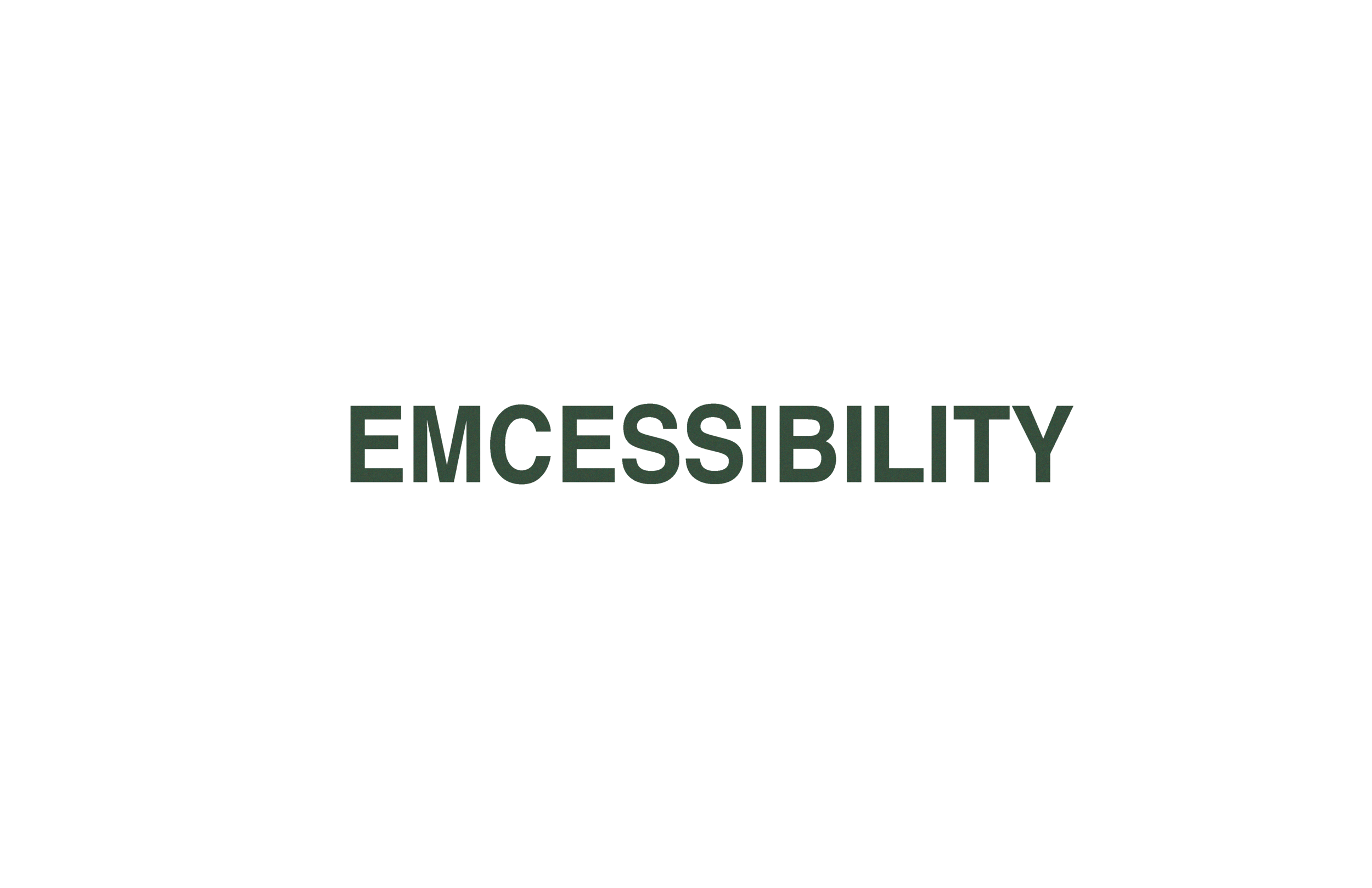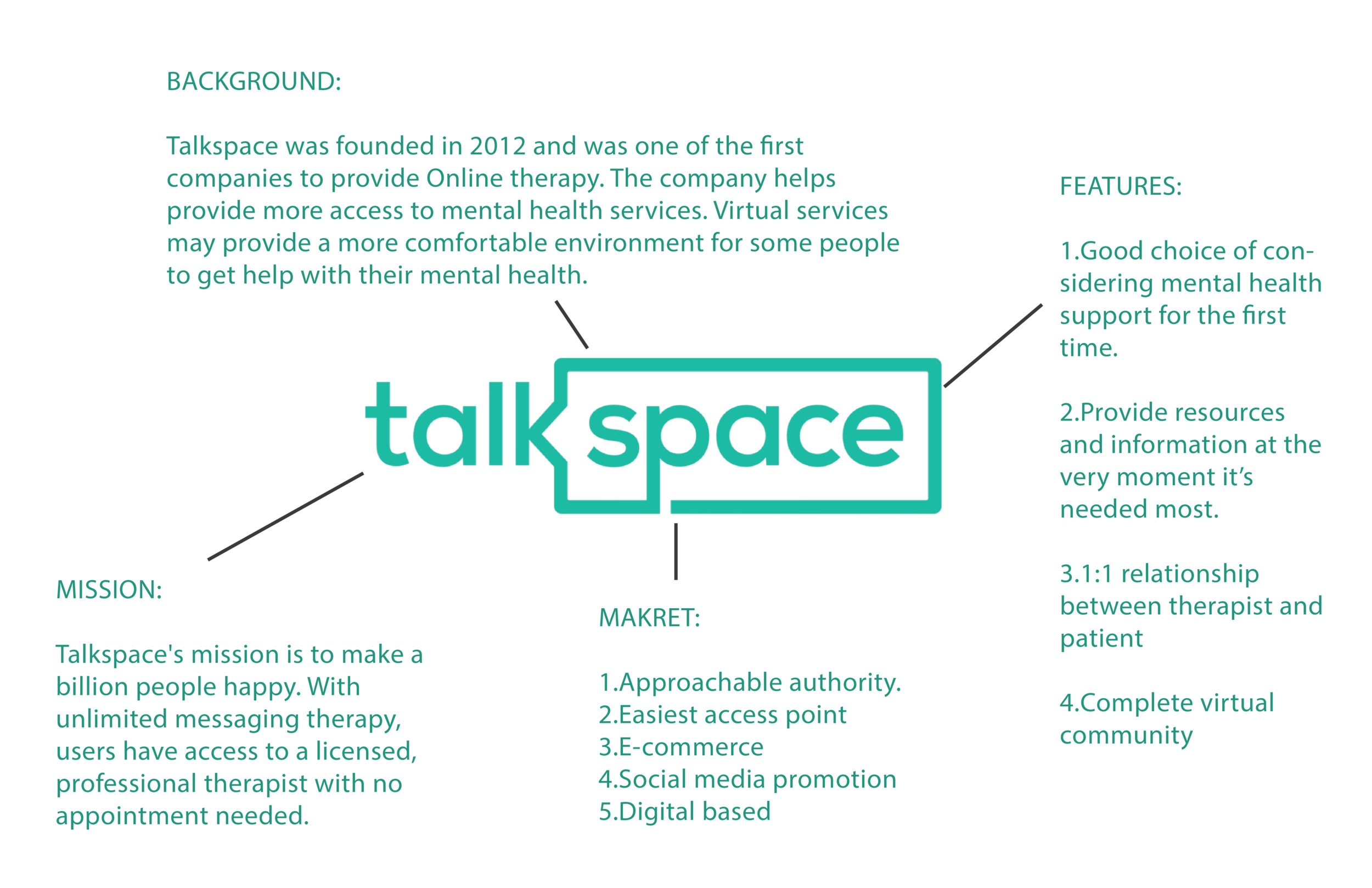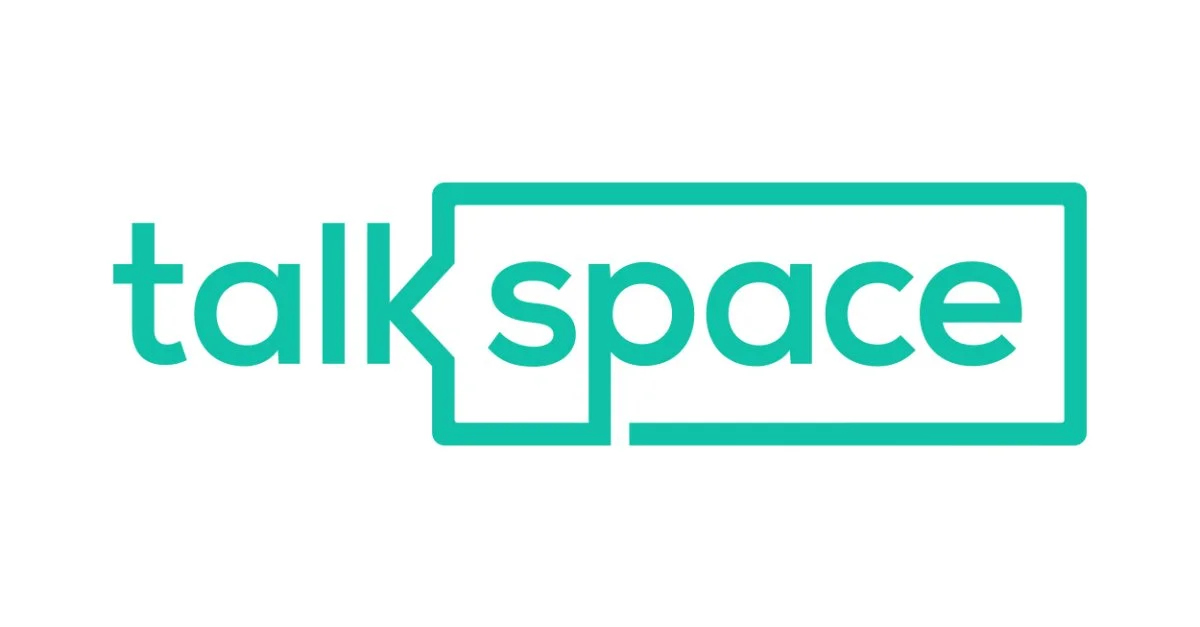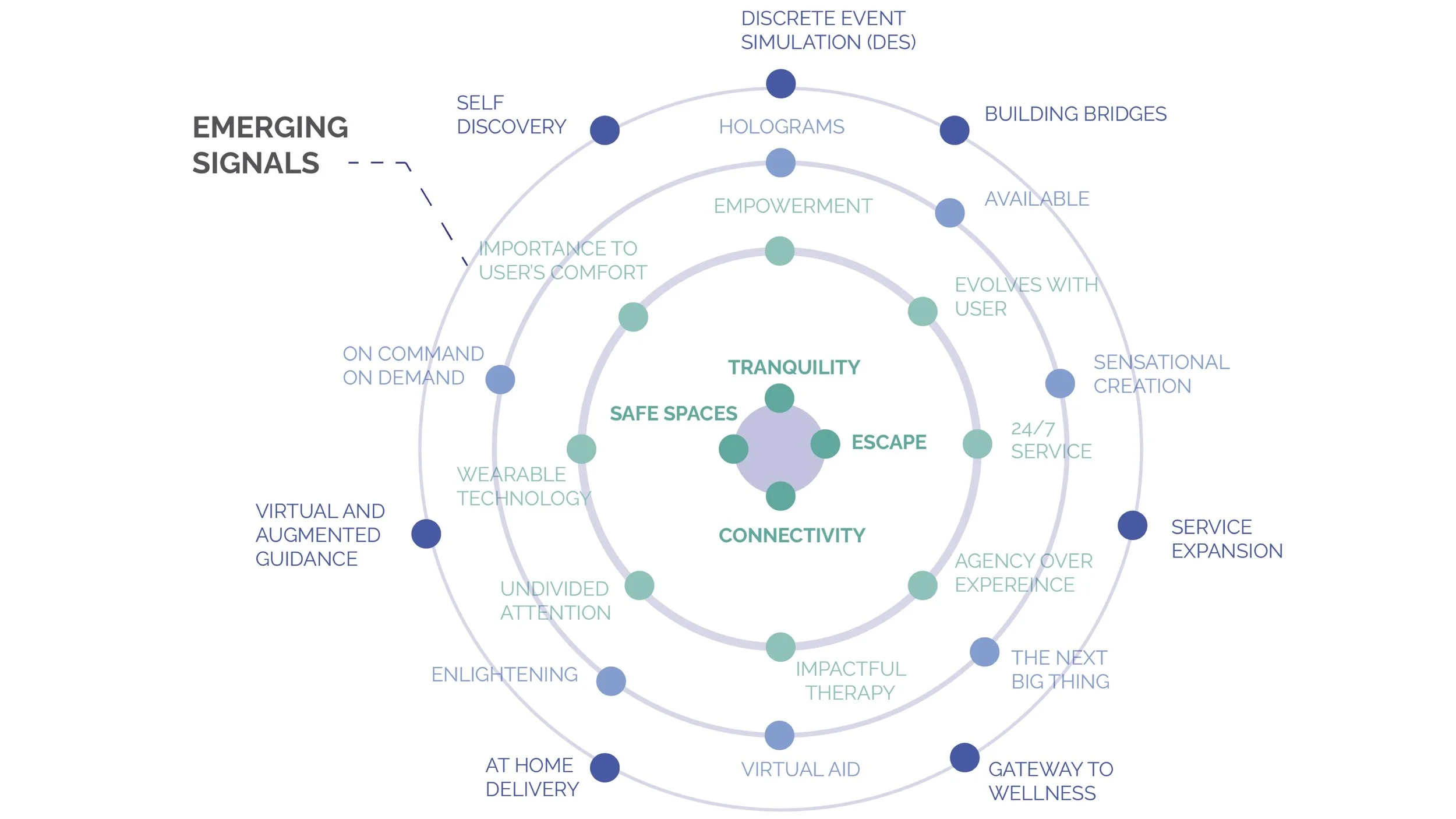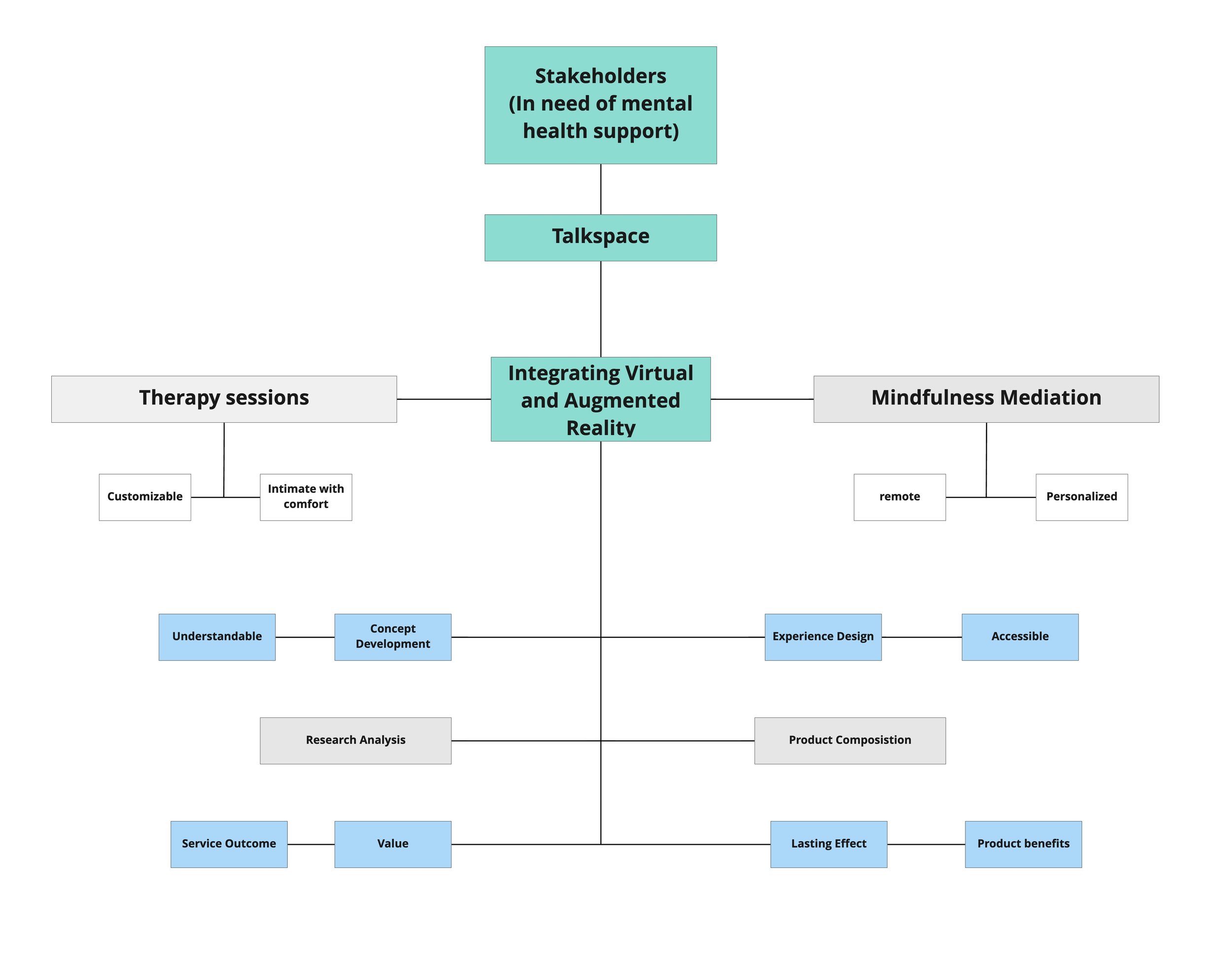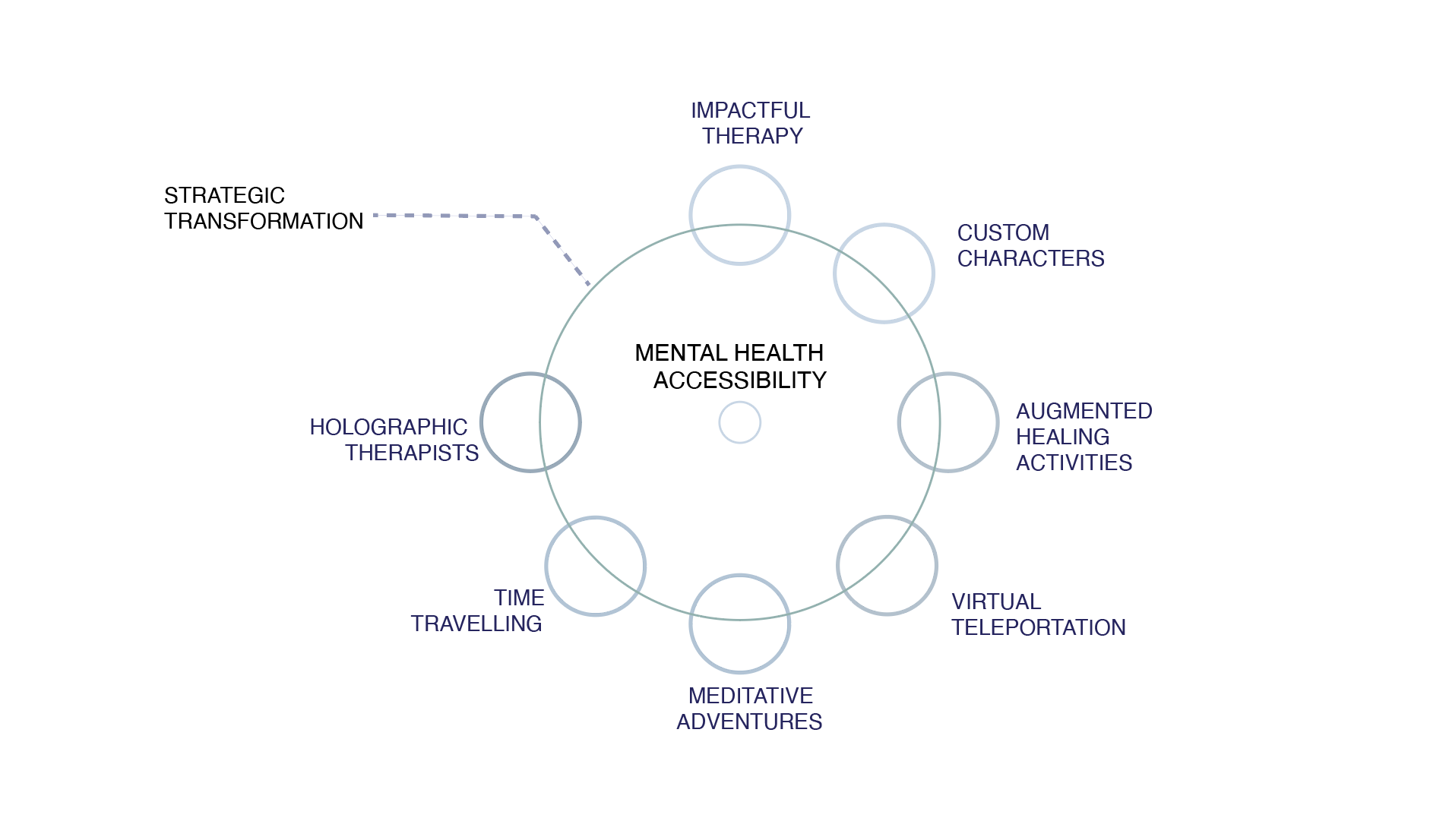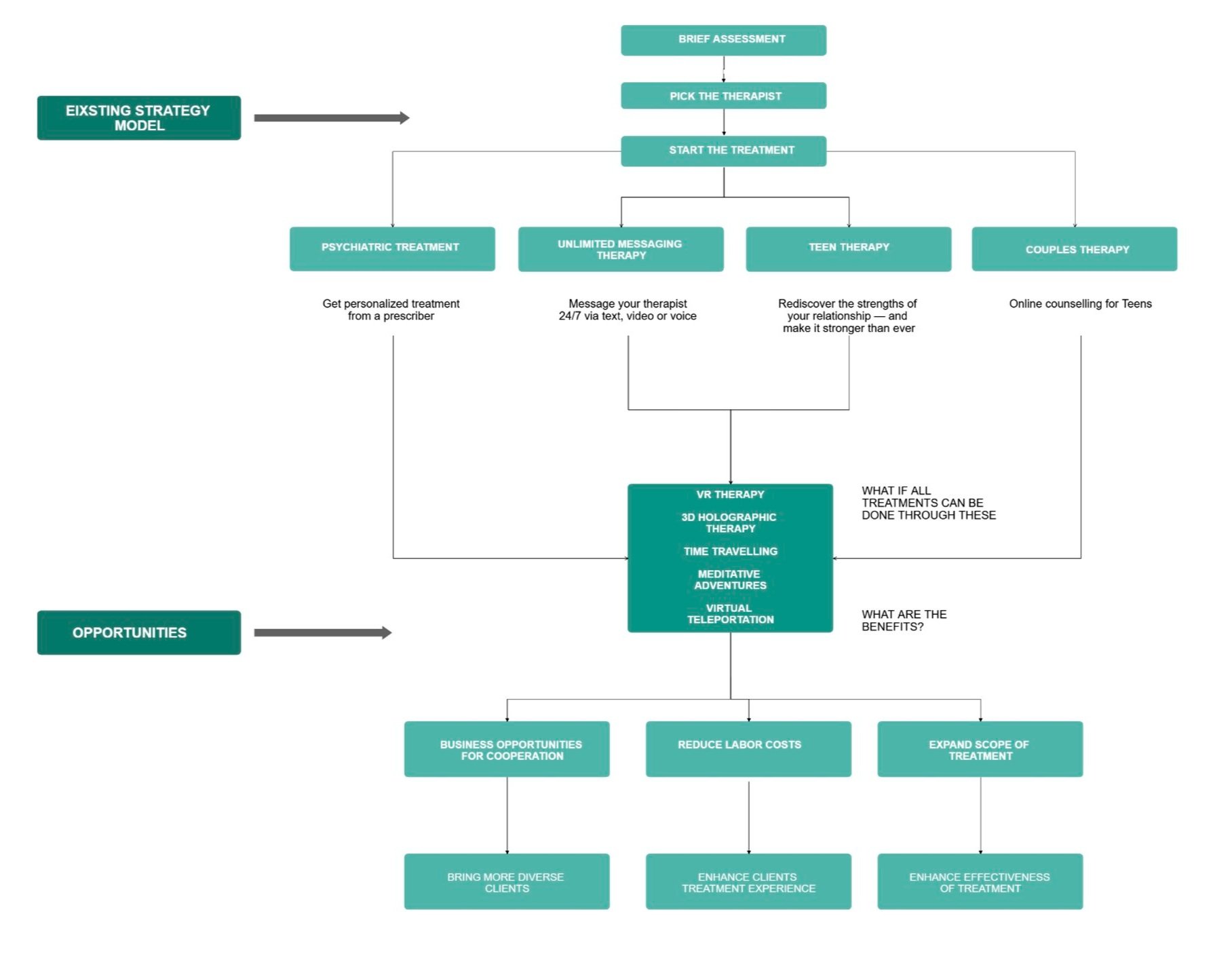
How might we help patients build strong minds towards low emotions and educate healthy user behaviour?
How might we help patients build strong minds towards low emotions and educate healthy user behaviour?
What if we can materialize the garbage emotion and then throw them away?
What if we could time travel to the past to get closure?
Project by
Wenlei Xiong
Yicheng Wang
Ying Zhong
Simrah Mahmood

emotion + accessibility
EMCESSIBILITY create the possibility for existing users of mental care applications as well as more potential users. Mental health has always been ignored, and diagnoses will be affected by social biases and discrimination. Therefore, we magnified the characteristics of VR to bring more immersive and private experience to these users, giving people the ability to create their own place that help the group who are not satisfied with the standard meditation videos provided by the app. The ability to bring an advanced form of therapy inside the comfort of people's homes who require the use of this app applies to our trend that we are engaging in making the whole process more accessible.
Phase1: New trend
By defining new trends, it help to acquire new customers and expand your revenue growth
Health & Wellbeing
1.Sustainability: using the human body to power medical equipment
2.Luxury: robots that kill Covid virus traces with UV light.
3.Transformation: digital healthcare.
4.Cognitive Counselling: AI music therapy.
5.Emotional: giving mental health the same importance as physical health.
6.Efficiency: Faster healthcare provided with minimal contact
7.Accessibility: instant healthcare provided digitally
8.Futuristic: using electromagnetic light, sound and energy to heal patients.
9.Isolation: at home workouts during Covid to maintain physical & mental health.
EMOTIONAL
+
ACCESSIBILITY
=
EMCESSIBILITY
Description
EMCESSIBILITY stand for Mental health care that is instantly accessible digitally. Telehealth lets patients stay connected with their healthcare providers and big data helps doctors to provide more precise treatments and health advice. Through mobile app and web-based technology, smaller and understaffed clinics have the opportunity to connect with other more experienced doctors at central hospitals and patients can effortlessly coordinate with doctors from their home. And mental health care can be delivered in a live, interactive communication.
Signals
Telehealth as a valuable tool for behavioural health services Social media evidence
Pinterest launched a search tool that leads users who look for terms such as “work anxiety” or “stress” to mood boosting interactive activities.
Facebook released time-management tools to help users limit excessive social media use, which has been linked to depression and feelings of worthlessness.
Instagram is removing the “like” feature in part due to the psychological damage caused by the competitiveness of social media influencers.
Implication
The future of psychiatry will likely be increasingly personalized virtual, allowing them to access therapeutic support they otherwise might not receive. This brings easily accessible therapy to rural communities and to people who may not feel comfortable going to a therapist’s office. “Emcessibility” will evolve into individualized “whole person” care and will address complex biological, psychological, social, cultural, spiritual, and postulated energetic causes and meanings of mental illness.
Artificial intelligence software is already changing how physicians work with patients and how patients obtain care for mental health problems. This trend will continue and accelerate as AI applications become pervasive in industrialized countries.
Psychiatrists are likely to see an increase in video conference sessions, with a potential foray into virtual reality. It’s also possible that artificial intelligence could advance to the point where it could provide rudimentary care.
Phase2: Conceptualizing Opportunity
Why Talkspace
As being a company that already delivers its services remotely to more than 1.5 million clients in North America, we want to show you how you can take Mental Health services to the next level through the integration of your patient’s own imagination.
Brand analysis
+
EMCESSIBILITY
1.What might be the products?
Without physical interaction, users can chat with trained behavioural therapists and get immediate support. However, “facilitating access is not the only objective of this start-up. An important component of the value proposition is gathering and analyzing personal data that enables therapists to provide customized support.” Through big data and information tracking, Talkspace has achieved a leading position in health support products. The potential foray into artificial intelligence will bring up more possibilities in mental health treatment and rudimentary care for the patients.
2.What markets might they serve?
The behavioural data shows that Talkspace collects is beneficial for studying the health and behavioural trend in users. “For a [health-care] provider or academic researchers, this might help them understand how people behave when they’re symptomatic.
The on-demand emotional support also allows the patients from rural places to have access to advanced resources and professional diagnosis and treatment. The virtual reality and artificial intelligence will benefit those who have trouble meeting a therapist in person. The app can proactively intervene when an abnormal behaviour of the user is detected by the software.
3.How can the identified trends help the brand in delivering more benefits to their users?
Reducing bias and human error: Algorithms have already been proven to be successful at detecting signs of conditions like depression and post-traumatic stress disorder by analyzing speech patterns and facial expressions. Mental and physical health providers could use these tools during patient intake meetings to serve as a backup. These meetings are usually very brief, and providers who are rushing from appointment to appointment might not notice when patients exhibit subtle signs of trouble.
2. VR has an extraordinary ability to create powerful simulations of the scenarios in which psychological difficulties occur. With VR-enabled therapy, there’s no need for a therapist to accompany a client on a trip to a crowded shopping centre. Results are also better than those expected with the best psychological intervention delivered face to face with a therapist.
4.How compelling is your case to management?
1.The instant live chat feature of ginger offers accessible consultation for the patients. However, as each coach has different backgrounds and experience, when they are giving diagnosis, it’s inevitable that the health providers might provide biased information. So by involving artificial intelligence, it can effectively detect the condition of patients and aid the therapist to give more accurate treatments.
2.It also saves the labour of health providers and time. In terms of the use the VR in mental health care, according to Daniel Freeman, “With VR-enabled therapy there is an upfront investment to create the treatment; however there will be large cost-savings when used by many people.” Because VR-enabled therapy automated it enables reallocation of skilled mental health clinicians. Oxford VR’s Fear of heights treatment averages at just two hours of treatment time, compared to at least six hours for traditional face-to-face therapy.
5.What elements of your opportunity can be made now-able within the next two years?
Within the next two years, we can foresee that the application of AI becomes more mature and accurate. New research shows promise in identifying depression based on factors like admissions data or facial expression, helping doctors to better-connect and reach out to patients. Algorithms excel at pattern recognition and many can process the same data a doctor would take weeks to review in a matter of minutes. Implementing AI into future diagnostic efforts could greatly improve the speed and accuracy at which people get help.
6.What market shape might they take? Product, service or both.
Probably a VR product that totally free the patients from visiting a real therapist and complete their consultation via virtual tour. Or it can add more possibility to the form of activities on the Ginger website. For example, VR can create powerful scenarios for a meditation and users can customize the surroundings as they wish.
Phase 3: Build Conceptual Framework
Emerging signals
New Framework
Our goal is to adapt to people's custom preferences and elevate their capabilities or options while using the Ginger app. These frameworks consist of taking the Talkspace to the next level by enhancing the mental health aid experience through augmented and virtual reality. The demographic we would like to focus on is people from 18-30 years of age, needing mental health aid for Depression, Anxiety, Obsessive Compulsive and Post Traumatic Stress Disorder.
Our new features
Therapist’s guided meditation and stress relieving activities already provided by the application
2. Healing Rooms concept comes from people being the creators of their own environment.
3. Customized happy place can be created will help those who are not satisfied with the standard meditation videos provided by the app

Why choose us/ Our benefits
1.An extraordinary ability to create powerful simulations of the scenarios
2.No need for a therapist to accompany a client on a trip to a crowded shopping centre
3.Better results than those expected with the best psychological intervention delivered face to face with a therapist
Phase 4: Existing strategies &
potential opportunity
The Strategic Scenario
The transformation happened within the decades, where powerful and advanced Technology (machine learning ) provide more accessibility and possibility.
Our strategy Model
The opportunity conclude three main features: The Holographic Projector, Healing Rooms Through VR/AR System and sensory features.
The Holographic Projector
The holographic projector as a byproduct of Talkspace allows more lively and real interaction between the counsellor and the client. And users can easily take the consultation at home or other spaces that they feel comfortable with and save time on travelling to the psychiatrist's office.
Healing Rooms Through VR/AR System
AR Decompression feature allows customers to enhance their meditation experience by integrating their current space with visual meditation or decompression. Therapist can help users create virtual characters, who have a naturally generated personality based on data collection to conduct effective treatment
Sensory Features
The convenience of Talkspace VR's psychotherapy that brings to users is not only an immersive experience, but also a real tactile stimulation, which can accurately simulate various states.For example, the touch sensation between users and characters with temperature of human skin that could arouse emotional resonance. Therefore, the sensory therapy of VR technology greatly improves the user experience, and provides more immersive treatment that assists users not to stay enmeshed in a negative circle.
The combination of 3D holographic and medical technology has greatly improved the treatment and efficiency of consultation and treatment services. It not only allows patients to more freely decide the scene for consultation, but can even simulate previous accident scenes to conduct desensitization training for patients. The therapist can carry out continuous intervention treatment by observing a series of behavioral and emotional responses of patients when facing the 3D holographic projection scenes.
Product Release Timeline
Benefits for company

Imagine…
User scenario#1
Maya Khan
32 years old single woman, working at TD bank in Downtown Toronto, raising 2 children.
Balancing work and home life is very difficult and stressful for her. Her boss constantly puts more pressure on her at work, but she does not refuse because she is afraid to lose her job Maya has developed severe anxiety attacks, but cannot physically see a therapist due to her kids. While Maya’s kids watch cartoons in the living room, she sits alone in her bedroom, wears her VR headset. She adjusts the settings to late evening, where the sun is about to set on the beach. Maya and her therapist sit near the sparkling, icy blue water and practice breathing exercises as the sun sets and the waves come in and out.

User scenario#2
Olivia
19 years old , freshman student, she is getting stuck repeating the same negative relationship
despite her best effort.
Since the emergence of Talkspace’s VR technology, she could conduct the meeting with a counsellor at home completely at her own space, creating the scenario that her parents are reacting to her positively when she was a child and said that “you did a good job!” and embraced her whenever, which would help her get unstuck from the negative cycle.
During therapy,She could even feel the breeze touching her face, and she was deeply attracted by the smile of her mother. His father stroked her with his hand and said "I'm so proud of you, honey!” She wanted to hug her parents, she wanted to share everything about herself with them, she wanted to go to the supermarket and have a picnic with them. She started to be healed by Talkspace’s VR technology with no fearing her parents. The therapist also helped Olivia to create a character that often encourages her as well as appreciated her beauty, personality and it completely opposite to the person she used to interact with. It can be more intuitive, and assist users to face psychological problems effectively.

User scenario#3
Ryan
A 27-year-old young man who works in the curatorial art industry
Because of Ryan's resistance to going to the clinic for treatment, he finds Talkspace for consultation. He downloads the app and after answering a series of questions, he finds that Talkspace can provide 3D holographic services. He immediately purchased this service. After a detailed conversation with Ryan, Talkspace's company comes up with a personalized treatment plan. They ask Ryan to provide photos of his family, friends, and colleagues around. Talkspace is going to make their holographic projections. Ryan, therefore, begins his first experience.
In a dimly lit room, Ryan puts on his women's clothing in silence, as serious as he is about to welcome a grand meeting. He solemnly presses the button, and then, holographic projection images of family, colleagues, and friends appear around him. However, Ryan's PTSD occurs, and he is extremely panicked, afraid of receiving ridicule and teasing again, so he kneels and closes his eyes. After three minutes, Ryan gradually calms down. He tries to open his eyes to meet everyone, and he finds that everyone is smiling and looking at him very warmly. Then comes the voice of the consulting coach from the machine. The coach continues to praise how beautiful Ryan is and encourages him to face his trauma bravely. Ryan cries, how long he has been waiting at this moment.
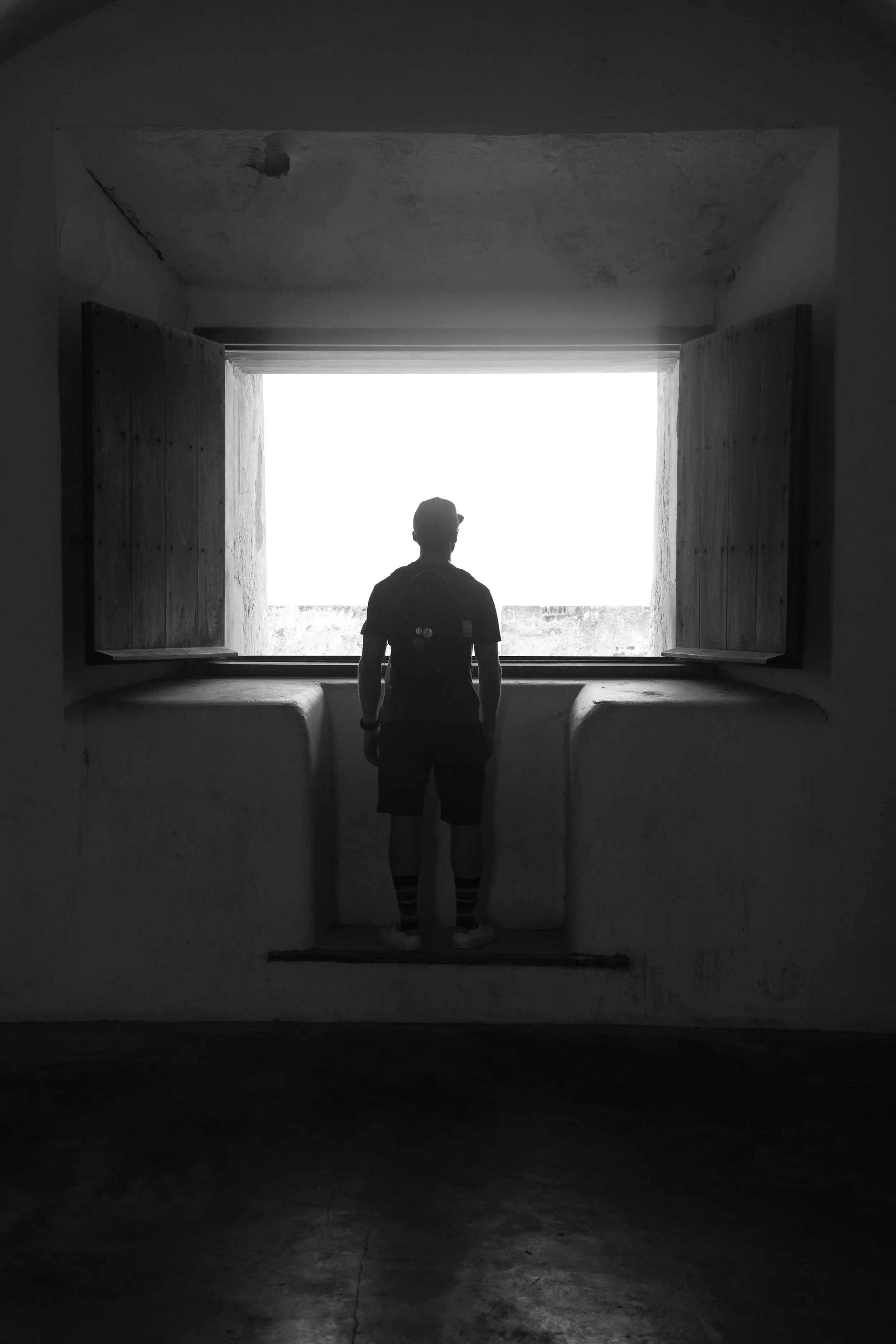
User scenario#4
Ryan
45 years old, works as a security guard for a local company in a small town.
His friend reminded him that his dead wife would have wanted him to get back on his feet and face life positively. The first thing that popped up was an inviting page that said, "Welcome Jasper, don't worry, I am here to help you.”After completing the survey, the profile of a male psychologist popped up on the screen he found the phone had automatically connected to the mini projector and followed instructions shown on the screen which asked him to place the projector on a plain surface. After clicking the "Start" button, a life-size 3D holographic image of Jeff pops up above the projector. Jasper felt fresh about the advanced technology.
During the consultation, Jeff slowly guided Jasper to deal with his wife's death in a positive way, not letting the grief overwhelm the good memories. And he gave him some ways to cope when the sad emotions occurred.
He found that when his grief occurred, his phone would automatically pop up a message alert informing him that he was feeling low and reminding him that he could take some deep breaths to relieve it. This app has helped Jasper reduce the number of trips to the pub and he has begun to participate in socializing with his friends.

Conclusion
With generative questions, our team explored new possibilities of enhancing the Mental Health aid experience. We have presented 4 different personas, how they interact and their journey to healing with our integration of virtual and augmented reality through Healing Rooms, Augmented Decompression, Holographic Therapists and Virtual Characters. With these implications, we will provide the company TalkSpace with the opportunity to expand their reach by introducing new dimensions to their services.
Thanks for reading our stories
